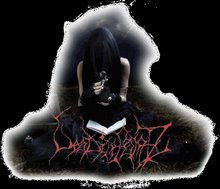



















THE OLDEST CHURCH IN SINGAPORE Built by Armenian pioneers of Singapore Agnes Joaquim (an Armenian) grew the Vanda Miss Joaquim orchid - national flower of Singapore. The Church was gazetted as a National monument on 6 July 1973
Three Armenian trading firms established them selves in 1821 soon after the founding of Singapore in 1819 by Stamford Raffles. Aristarchus Sarkies and Arratoon Sarkies of Malacca came to Singapore in August 1828 and established the firm of Sarkies and Moses. Three Armenian brothers set up Raffles Hotel in 1886. They were Arshak Sarkies, Aviet Sarkies and Tigran Sarkies. They also built the Adelphi Hotel.
The small Armenian community conducted Church services in rented premises. In 1827 it began to raise funds to build their own Church. For this purpose it was granted a piece of land by the Singapore government at Hill Street where the Church still stands. This site was part of the Botanical Garden at the foot of Government Hill (Fort Canning) facing Hill Street. Earlier the Armenian community was unsuccessful in securing a site facing the esplanade.
In 1834 the elders of this community commissioned George Dromgold Coleman, Singapore's first architect, to design and build the Armenian Church. Construction Started in 1835 and the building was completed in January 1836; the contractor was a Malabari (an Indian). The consecration of the Church was conducted in the Armenian language on 26 March 1836 by the priest Rev Eleazar Ingergolie.
The Church was dedicated to St Gregory the Illuminator, the first monk of the Armenian Church. It is believed that the design of the Church was based on the Mother Church at Echmiadzin in North Armenia.
The total cost of the building in 1835 was 5058.30 Spanish dollars. About a quarter of this was subscribed by Armenians in Calcutta, Java and Europe and other communities in Singapore. Twelve Armenian families in Singapore gave the rest.
Originally there was a conical dome and a bell tower with a ball and cross; these were replaced in 1853 by a beautiful spire by the architect Maddock.
Internally the Church is circular and superimposed on a square plan with projecting porticos in a cruciform pattern. Externally the most outstanding features are beautifully proportioned Roman Doric columns and pilasters.
The Armenian Church is an architectural treasure, one of Coleman's finest buildings in Singapore.
In 1909 electric light and fans were installed in the Church, the first in Singapore to enjoy electricity.
The memorial Garden in the grounds of the Armenian church is of special historical interest. The Armenian pioneers were buried in the old cemetery in Government Hill and after 1865 in the Bukit Timah cemetery. All the tombstones that could be recovered from the Bukit Timah cemetery were assembled in 1988 to form the Memorial Garden.
The tombstone of Agnes (Ashen) Joaquim is in the Memorial Garden. She grew the orchid, Vanda Miss Joaquim which is now the national flower of the Republic of Singapore.
Just behind the Church is the parsonage, rebuilt in 1905 as a memorial by Nanajan Sarkies to her husband John Shanazar Sarkies, the distinguished scholar and merchant who died in 1904. Today the parsonage is used as a Counselling Centre by the Church of England.
The Armenian community never exceeded 100 members. There is an Armenian priest who conducts regular services with other Christians at the Church.
The Church of St Gregory is a credit to the Armenian pioneers whose religious zeal inspired them to build the oldest Church in Singapore. Several members of this community were pioneers who had contributed to the economic prosperity of particularly early Singapore.




No comments:
Post a Comment